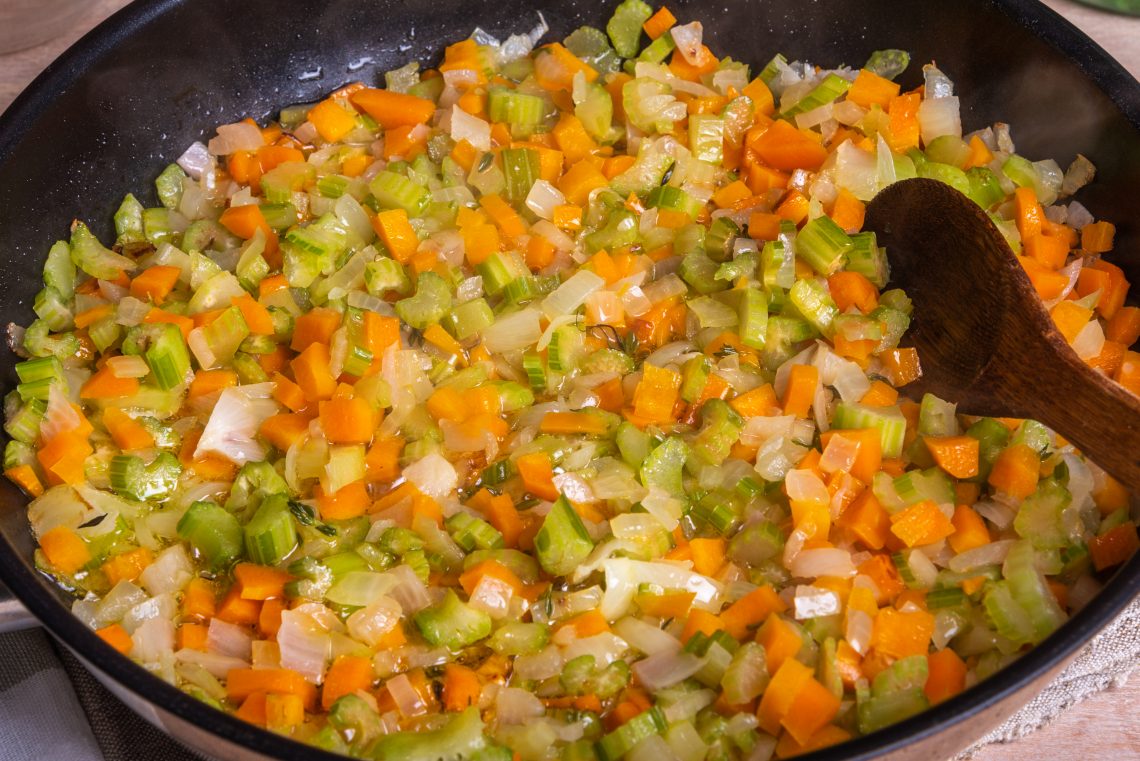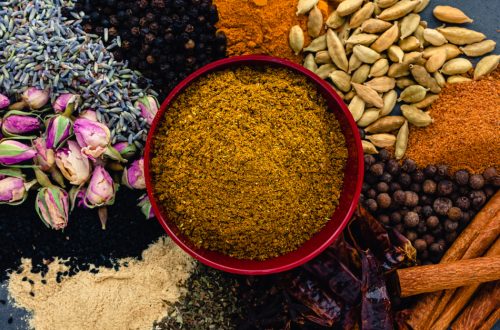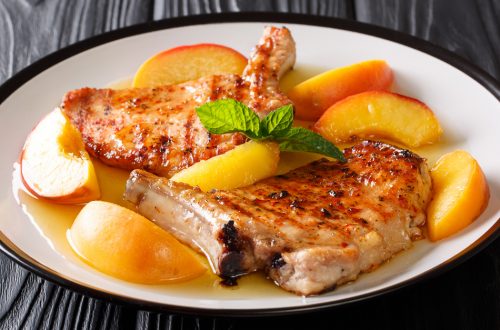
Take Care of Your Base with Aromatics
You can’t build a good house or any other structure without first installing a strong foundation. The same is true of many food recipes, from simple soups to elaborate casseroles, stir-fries, curries, braises, and sauces. As we all know, those dishes start with chopping onions and other basic aromatic ingredients. The reasons are simple. These vegetables provide your recipe creations with structure and flavor. Braised in a little fat, these plant-based carbohydrates break down to serve as a flavor base on which to build. You add to the flavor structure by blending in additional herbs, spices, and other ingredients.
Here’s a time- and labor-saving idea for you as we enter peak vegetable season. On some rainy weekend, take advantage of the availability of fresh produce either from a local farm stand or from your own vegetable patch and make a big batch of the aromatics you use over the year. Once braised, freeze your output in cup-size containers for use over the winter when you’re pressed for time. Or freeze them in ice cube trays and throw the frozen cubes into a plastic freezer bag.
Sure, you can buy sofrito in the grocery store, but your frozen concoction is bound to be better when you make it yourself. Plus, you can add your own secret ingredients like that extra bell pepper, jalapeno, fennel, or carrot.
When the cool weather comes and you’re in a rush, just reach into your freezer and grab a cup or two of that frozen goodness, then begin your braise or stew or tagine, goulash, or casserole. I’m betting it will taste better than if you had made it with the produce available in the wintertime that was doubtless picked and shipped from some distant field. Your family and guests will appreciate it.
International blends
Societies around the globe have recognized the value of aromatics, and each has created its own flavor profile, usually based on the vegetables that are common and available fresh. The French, of course, have their mirepoix, while the Italians have their sofrito. In the American South, the Cajun/Creole tradition has its “holy trinity” to flavor gumbos and étouffées. But let’s not forget the cuisine traditions of China, India, and the Middle East, each with their own aromatic standards. Even the Germans and Nordic countries have their own aromatic profile. Most of the main traditional foods from these cuisines begin with similar aromatic combinations.
Mirepoix – Diced onions or leeks, carrots, and celery. Add-ons include tarragon, garlic, parsley or chervil, and even artichokes, broccoli, and dried beans and starches.
Spanish/Catalan sofregit – Chopped onion, garlic, tomato, and sometimes bell peppers. Add-ons include oregano, thyme, and eggplant.
Cajun holy trinity – Chopped onions, green bell peppers, and celery. Add-ons include garlic, oregano, basil, thyme, and parsley.
Asian/Chinese trinity – Ginger, garlic, and scallions. Add-ons include soy sauce or fish sauce.
Indian Adu Lasan – Ginger and garlic ground into a paste, then rubbed on meat or poultry before cooking with softened onions.
German/Nordic suppengrün – Carrots, leeks, and celeriac. Add-ins include parsley, onions, parsnips, and potatoes.
Want to try something on the wild side? Samin Nosrat in Salt Fat Acid Heat lists the West African Ata Lilo aromatic flavor base: red onion, tomatoes, scotch bonnet peppers, and bell peppers puréed and reduced to a thick paste. That might expand your palate a bit when used in a nice, long slow-cooked braise of chicken thighs or beef short ribs or chuck.
Do you have a secret procedure with your aromatics? Please share.
To comment, please click on “Read in Browser” or on the headline to view the blog on the website. You can log in and comment at the end of the blog to share your thoughts and start a discussion.
If you’d like to share the blog, click on the Facebook icon or one of the others. Thanks!





3 Comments
Chuck Kennedy
What’s in “sofrito”?
Farmboy
Here’s a link to a sofrito recipe.
https://www.thespruceeats.com/basic-sofrito-recipe-2138283
Farmboy
and here is a link to an Italian soffrito recipe.
https://theclevermeal.com/soffritto-recipe/